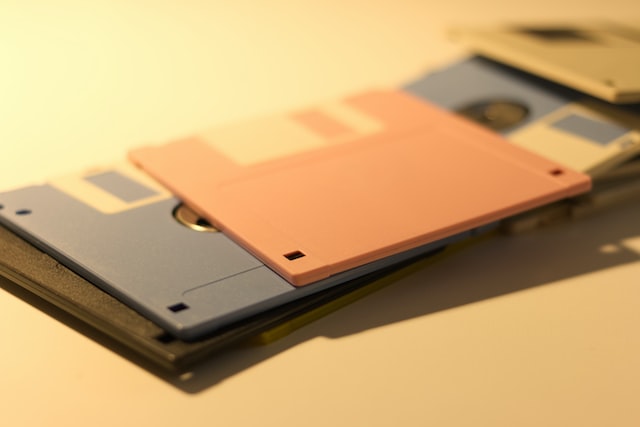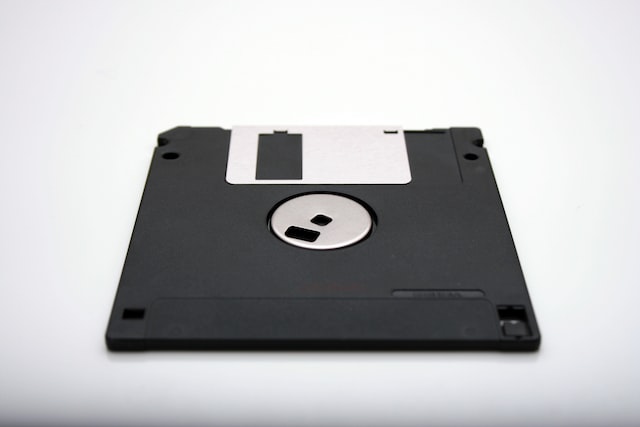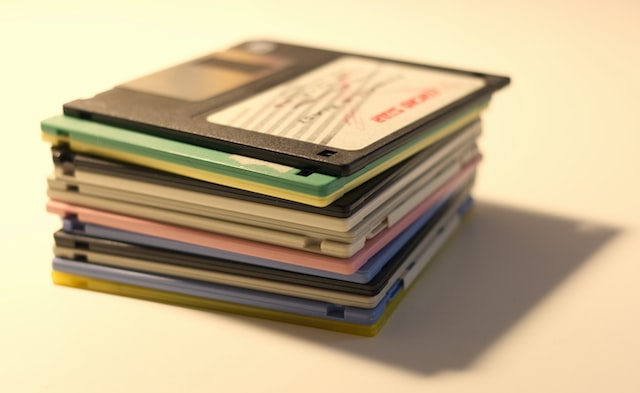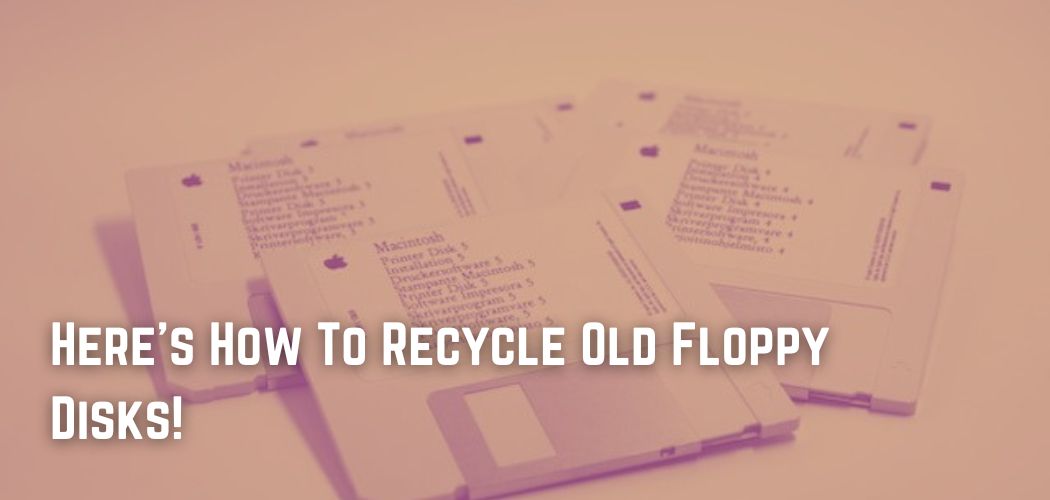The inner layer of a 5-inch, 14-inch floppy disc is composed of Mylar plastic, a kind of PET, covered with iron oxide.
(The same type of plastic is used for both cassette and VHS tape ribbons.) Iron makes it possible to magnetically imprint and recover the 0s and 1s that make up computer data.
If you have data on floppy discs that you wish to transfer, you have a few options. The first option is to get an external floppy disc drive.
Numerous major electronic merchants carry the gadgets, which have a USB connector so they can be plugged into a computer. Finding a firm that offers floppy disc transfer services is another option. Typically, you send them your old floppy discs, and they transfer the data to CDs.
Once you’ve moved all the information from the discs, you might want to wipe or destroy them. Keeping your information safe in the digital era is crucial, so if those CDs hold critical personal information or corporate secrets, why take the chance?
It is simple to lose data stored on a floppy disc (which was always one of the downsides of the technology). Downloadable applications are available for free that enable disc formatting. The mylar discs may also be disassembled and sliced into little pieces.
Make Spiral Notebooks
Making a notebook out of old floppy discs has a lot of benefits, such as a small size that fits in your pocket, a strong cover that keeps the paper from crumpling, and free entry to all hacker conferences.
Using a reliable hole punch or a drill to produce a spiral notebook is the simplest approach to constructing a personalized floppy notepad. Drill two holes in each corner of your floppy discs and paper stack (ensuring that the holes are evenly spaced)!
Create spiral bindings by coiling 16-gauge aluminum wire around a pen, or purchase two spiral bindings from any home improvement store and thread them through your floppy discs and paper.

Use the existing holes in a floppy disc, drill identical holes in your paper, and use string or elastic to hold them together.
Execution is crucial to ensuring that your notebook does not appear overly clever, so feel free to practice until you achieve perfection. Plenty more floppy discs are available to make up the difference!
How Can It Be Recycled?
If you’ve been using computers for a long time, you probably have a stack of old floppy discs stashed somewhere in your home or business.
We are all aware that putting them in a landfill may not be the best option, so let’s see whether they can be recycled.
Generally, it is possible to recycle floppy disks. This is because they are often built using materials that are highly recyclable. These materials consist of stainless steel, adhesive rings, polymers, and iron oxide-coated metals.
There’s no doubt that floppy discs can be recycled, since they are mostly made of materials that can be recycled.
Once floppy discs are sent to recycling centers, the devices are separated into their component pieces. Before recycling, plastic pieces are separated from metal parts, for example.
This is done to speed up the recycling process and make sure that one part doesn’t stop others from being recycled.
However, because recycling floppy disks is difficult, it is likely that there are no recycling centers in your area that recycle floppy disks. In addition, many recycling centers may not take the floppy discs unless they are in large quantities.
In reality, research shows that recycling centers can only recycle no more than 250,000 old floppy discs at once. Due to this, you may be required to drop off your floppy discs at a collecting facility, from which they are transported in bulk to a recycling site.

Before submitting your old and used floppy discs to your local recycling center, you should retrieve and store all the data and information contained on them on a fresh device.
This is to prevent the loss of crucial information while recycling these devices. You may drag and drop your valuable data onto a fresh floppy drive or USB drive.
All of your floppy discs can be recycled because they are made from materials that can be reused. So, the next time your floppy discs are no longer useful, you should make sure to recycle them.
Is It Worth Anything?
If any of the discs have real, original versions of commercial software (not clones), you might be able to sell them on eBay. There seems to be a small market for this kind of item among people who collect old computers.
There are also quite a few fresh blank floppy discs and 3.5″ disc drives for sale on Amazon, so if you have unopened, sealed discs, you may be able to sell these as well.
This must be part of the vintage electronics fad, similar to the return of vinyl record sales. Since you can also get coasters in the shape of floppy discs, why not use one for your coffee mug?
Companies That Provides Recycling
Now that your discs don’t have any private information on them, they can be recycled. Several firms specialize in the recycling of floppy discs. Green Disk, located outside of Seattle, is the first.

CDs and DVDs are shredded and sold to EPA-accredited recyclers for reprocessing; however, the firm does not disclose how it recycles floppy discs.
Green Disk is careful to separate the different kinds of plastic, which is important if the material is going to be used again. It appears reasonable to believe that plastic-made floppy discs undergo a similar procedure.
Conclusion
The plastic used to create floppy discs is sturdy and long-lasting, making it a material with strength and durability. It is ideal for repurposing as a planter, backpack, notebook, or piece of art.
On the other hand, if you are interested in electronics, it is possible to reconnect old floppy disks and floppy disc readers to build a MIDI music player that looks great.
With these thought-provoking crafts, you can avoid adding more electronic waste to landfills while making something useful, beautiful, or just plain cool.





